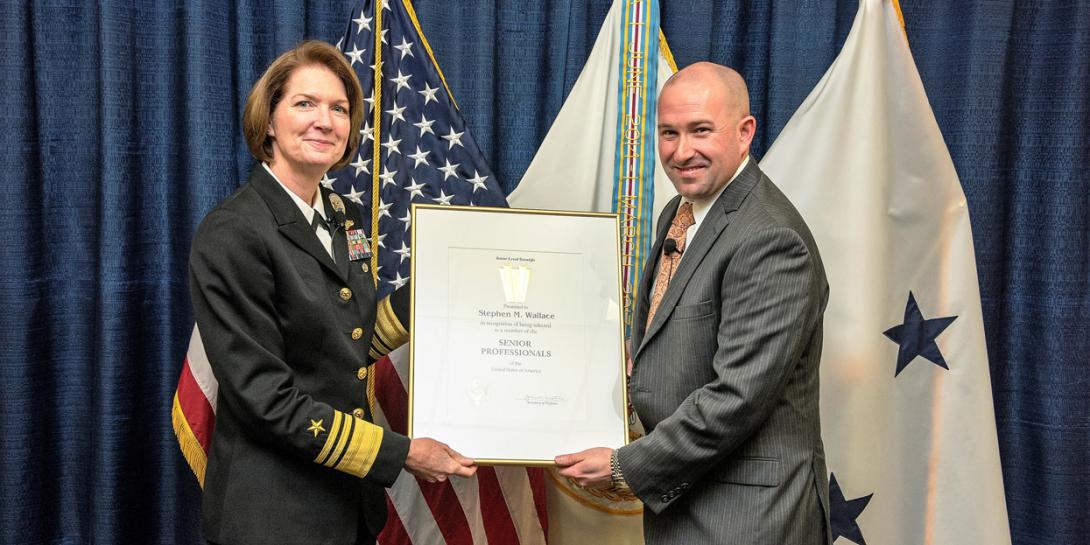DISA Targets Emerging Technologies
The Defense Information Systems Agency (DISA) has reorganized its technology innovation efforts into a single organization designed both to work with outside research organizations and to operate across internal agency lines. The new organization, known as the Emerging Technologies (EM) Directorate, will tap legacy expertise but apply it in a new approach to incorporating innovation, according to DISA.
Steve Wallace, the newly promoted systems innovation specialist of the EM Directorate, explains that the new team is structured around the way the agency operates. The goal is both to grasp and exploit emerging technologies better and to be better positioned within DISA to achieve maximum effectiveness. He continues that everything from cyber capabilities to identity and infrastructure technologies are touched by the EM reorganization.
Wallace emphasizes that EM is not the Defense Advanced Research Projects Agency (DARPA) and is not trying to be a DISA version. Instead, it aims to work with DARPA and other government, industry and academia organizations to bring innovation to bear on DISA’s needs.
The new directorate was formed by consolidating several legacy innovation groups: the Innovation, Systems Engineering and Architecture Office technology innovation branch (BDE5); the Cyber Development Directorate Innovation Office (IDI); and the R&D investment planning (TO1), technology recon/analysis and technology strategy/oversight (TO3) elements of the former Chief Technology Office.
With the consolidation, EM comprises three divisions. The first, the Innovation Support Division, develops and executes collaboration and outreach programs among DISA organizations. These include the Procurement Directorate and the Office of Small Business Programs for EM-based efforts.
The second division is the Collaboration and Defense Division, which focuses on business development at DISA. It features the Development Directorate, Services Development Directorate and the Joint Force Headquarters Department of Defense Information Network (JFHQ-DODIN) to define requirements and establish priorities for EM assistance and solutions.
The third division concentrates on infrastructure. It supports technical teams in the Infrastructure Executive Directorate and the Services Executive Directorate by defining requirements and establishing priorities for their EM assistance and solutions.
Even though personnel are assigned to one of the three divisions, they are working across organizational lines, Wallace emphasizes. “The last thing we want to do is stovepipe those individuals and say, ‘You can only work on this one particular area,’” he emphasizes.
The EM will work with industry in several ways. The small business office at DISA will play a large role, Wallace says. The new Systems Engineering, Technology and Innovation (SETI) contract vehicle will provide better access to key and nontraditional vendors, as will the other transactional authority (OTA), he adds. The EM will work with other government and industry organizations as part of a diverse menu for working with industry. The majority of innovations from EM work likely will come from these cooperative efforts, he predicts.
“We want to find other niches and other folks who bring different ways of thinking about given problems,” he declares. “We’re looking to adopt things that are emerging and potentially already are in use out there in other means.”
The EM team has been given straightforward direction, Wallace states. “We want to look at technology that is closer to bear … technology that is closer to reality but still a little bit of a reach,” he explains. He speaks of separating true applicability from technology hype and parlaying the applicability into a meaningful and workable solution for DISA.
In the short term, identity credentialing and access management are likely to reap the most benefits from the consolidation, Wallace offers. Browser isolation and DODIN protection also will gain from the formation of the new EM, he adds.
Wallace allows that his goal for the long term is more broad and less technical. The technical workforce would be able to broaden its horizons to a greater extent than currently possible. DISA would feed the EM group, which in turn would increase enthusiasm for its efforts.
More information about DISA's EM will be available at TechNet Cyber 2019, being held May 14-16 in Baltimore.





Comment
Steve: Well done! The next
Steve: Well done! The next few years are going to be quite exciting for DISA with all the advances in automation. Good to see you at the tip of the spear!
Comments